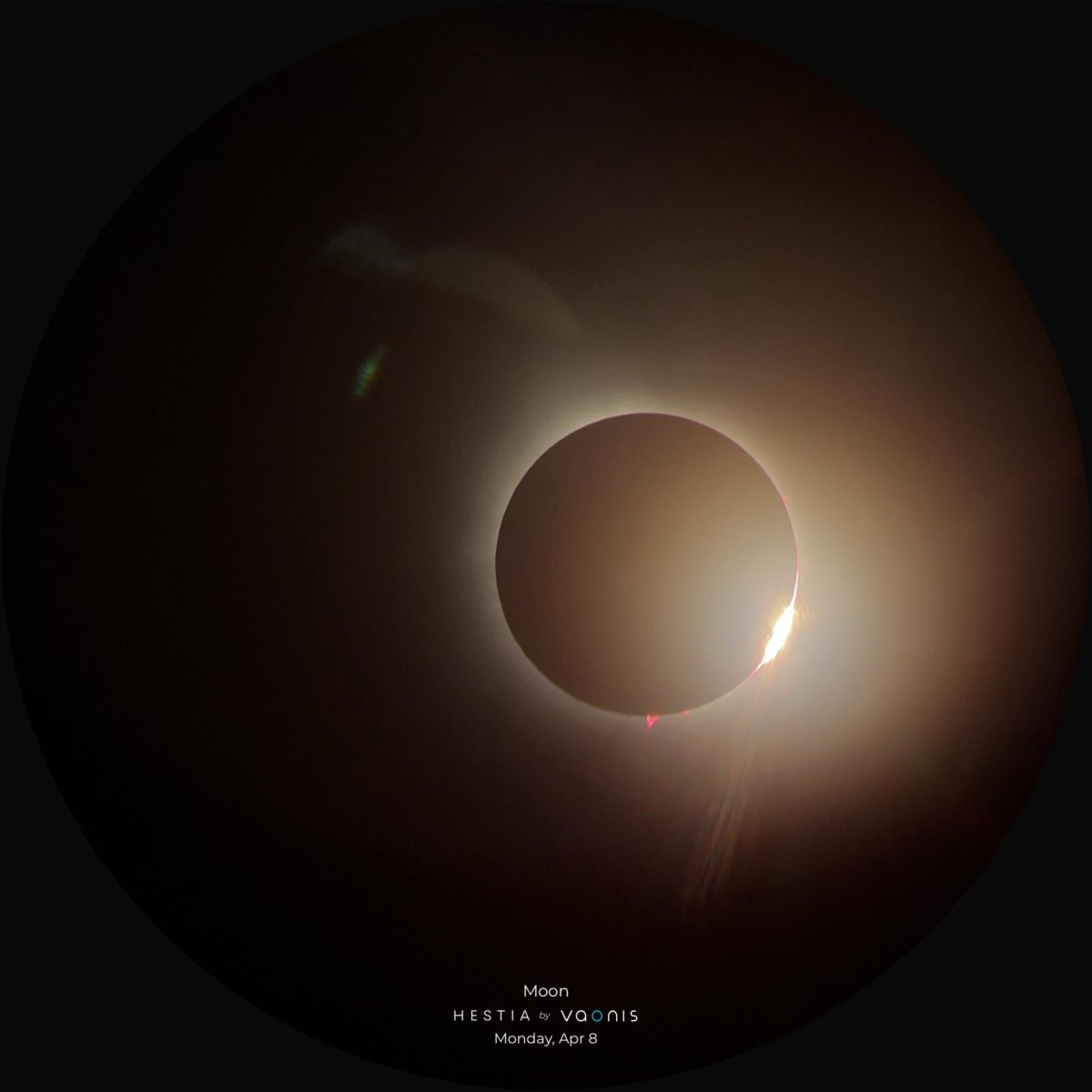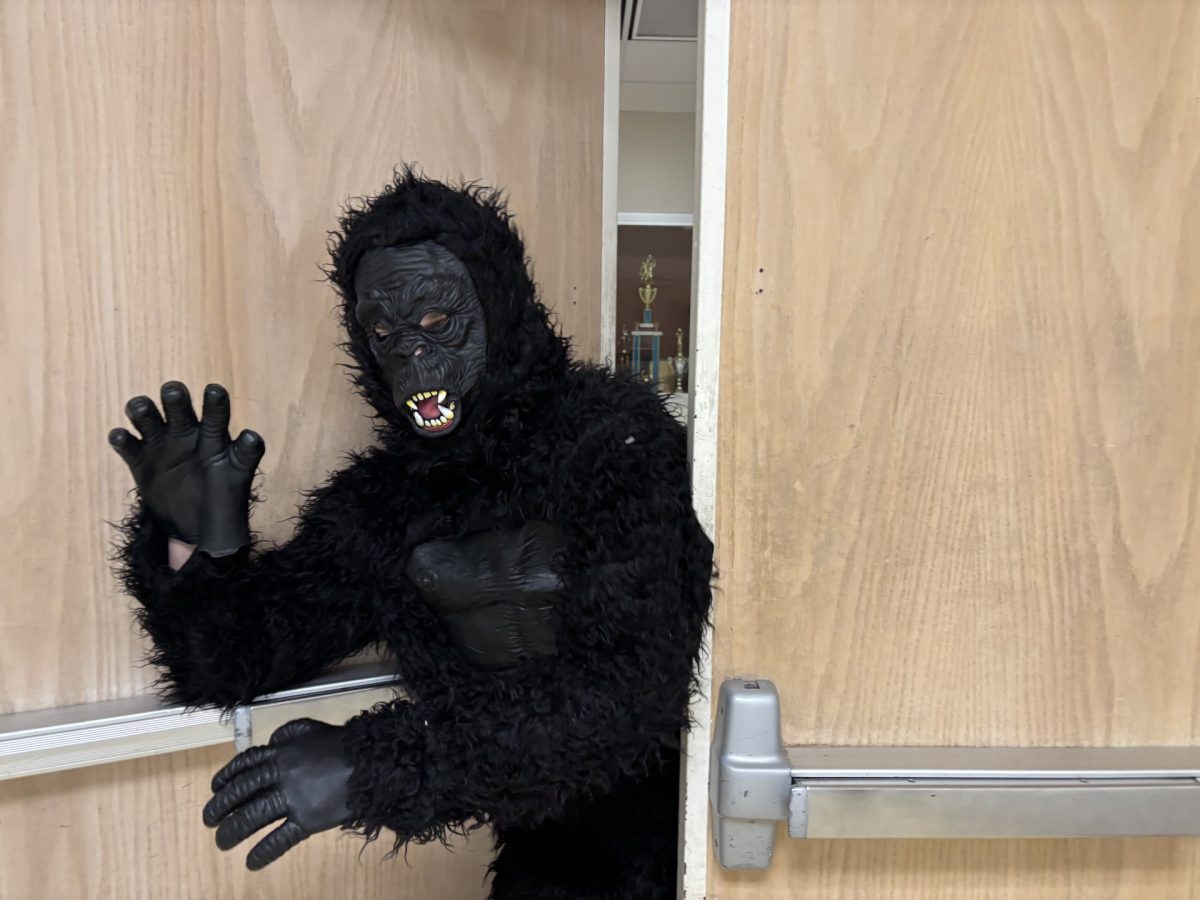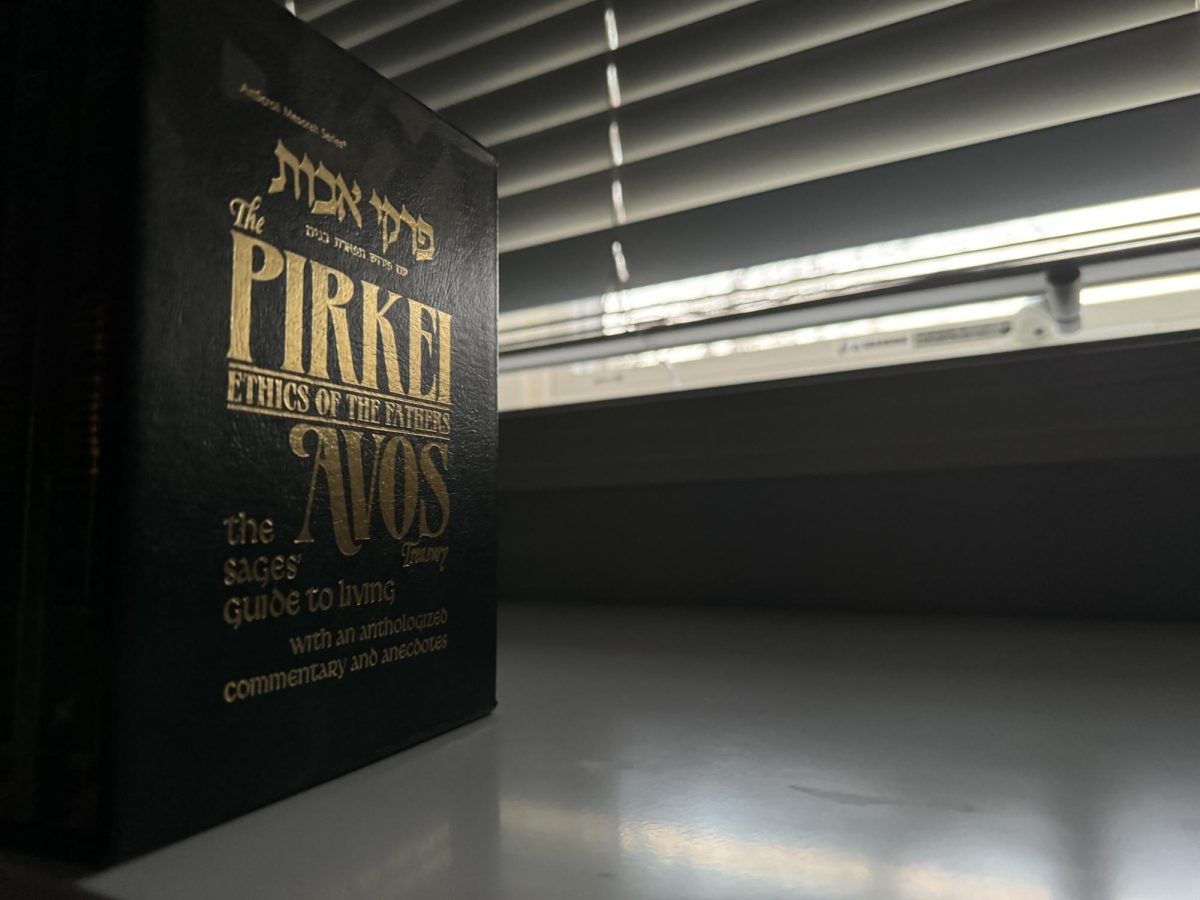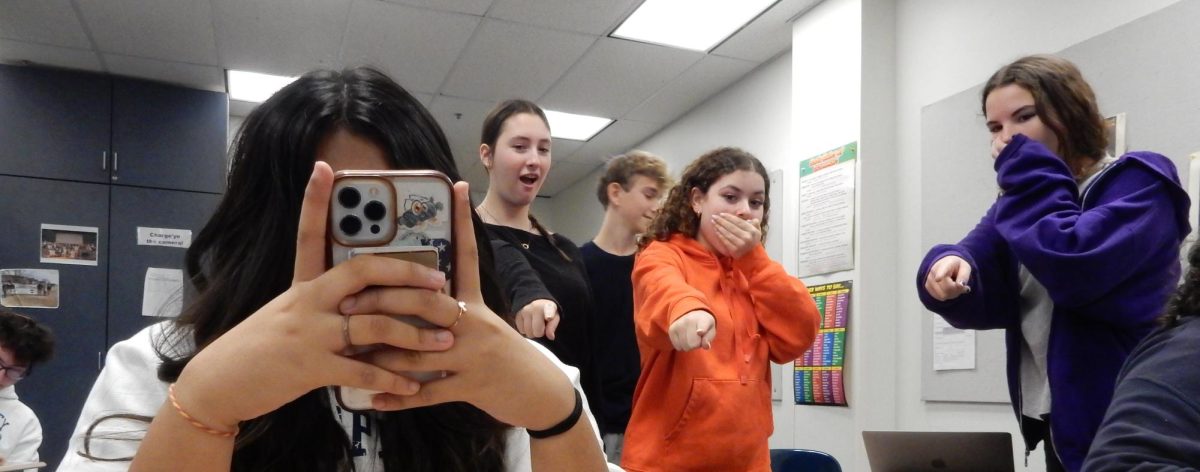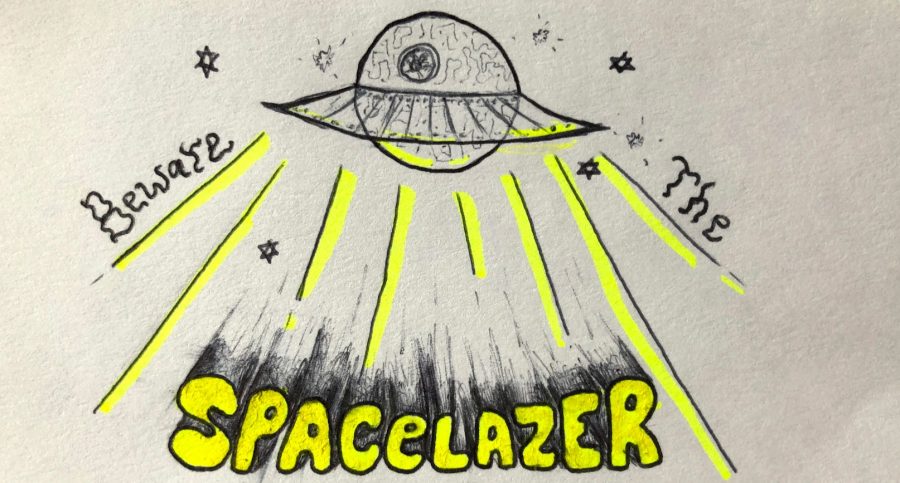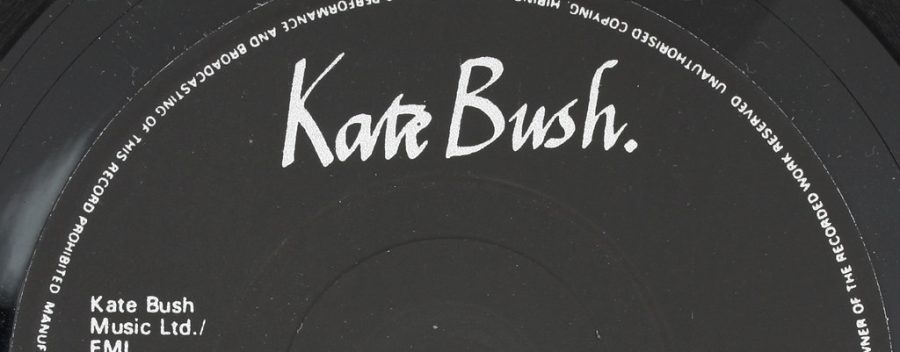Running Up The Charts: The Dreamy and Infectious Sound of Kate Bush
‘Running Up That Hill (A Deal With God)’ single disc, which some may have put on a record player to listen to the song. Image by Flickr.
October 28, 2022
“And if I only could, I’d make a deal with God, and I’d get him to swap our places…” If you’ve listened to radio or mainstream media then you’ve probably heard these lyrics before. The song ‘Running Up That Hill (A Deal With God)’ by Kate Bush explores the relationship between a man and a woman where the woman is pleading to “make a deal with God” in order to swap places to better understand each other. The galloping rhythm and clean, simple synth line help bring focus to Bush’s vocal performance, serving as an outstanding introduction to Kate Bush’s 1985 album ‘Hounds Of Love.’
‘Running Up That Hill (A Deal With God)’ had a huge resurgence in 2022, when it was featured in the most recent season of ‘Stranger Things.’ The song had a big role in the plot of the show, pushing it into record breaking territory. On June 17, the song placed number one in the U.K. charts, breaking three records for Bush: Longest time for a single to reach number one on the charts from when it was released; longest time between having a number one song on the charts; and the oldest female solo artist to top the charts. It also became Bush’s first song to enter the U.S. top ten charts, placing at number eight.
If you, like many other people, have been captivated by the catchy hooks of Kate Bush, it’s worth checking out the rest of the album. However, you might be wondering: How does the rest of ‘Hounds of Love’ hold up today? Are the themes and soundscapes explored still relevant?

The title track, ‘Hounds Of Love’ is about the trepidations of falling in love with someone. A hound is usually aggressive and hostile, representing the many opportunities for a disaster. By the end Bush commits to the relationship, and in doing so she feels lost and unsure of her identity.
Following ‘Hounds Of Love’ is ‘The Big Sky,’ the most upbeat song on the album. It mostly discusses childlike wonder, like looking up into a big sky and daydreaming. However, it is also about change, as the clouds represent an ever-changing society.
Despite fitting the traditional definition of ‘pop songs,’ Bush shows it does not define the quality of her product. Her songs are filled with passion and great lyricism, unlike traditional pop, that end up as derivative and uninspired, causing them to have a short shelf-life.
The next song is the eerie, yet majestic, track ‘Mother Stands For Comfort,’ which explores in depth a mother’s role in a family and the concept of maternity. When Bush says “Mother will hide the murder, Mother hides the madman,” she conveys that being a mother means protecting those you love at all costs, even if their sanity is gone. The song itself is the most uneasy on the album, showing that these situations are uncomfortable for everyone.
‘Mother Stands for Comfort’ then transitions to the open and soaring song ‘Cloudbusting,’ my favorite on the first disc. It deals with loss, remembrance, and trying to get through past trauma. On a technical level, the song is told from the perspective of Peter Reich. Peter Riech was the son of Wilhem Riech, an Austrian doctor of medicine and psychiatrist, who created the ‘Cloudbuster.’ In the song, Peter Riech reflects on when he would use the cloudbuster with his dad and the longing for those times to come back, as Wilhelm Riech had been incarcerated by the CIA. This tone is further backed up by the soundscapes of the song. A simplistic drum beat holds the song together accompanied by a beautiful vocal melody. However, Bush’s vocals and lyricism carry this song, showing her range as an artist.

The album starts to take a turn when we reach the second half titled ‘The Ninth Wave,’ which changes from strictly single pop songs to having an overarching theme. Today, this sudden change in topic might feel odd, but when it was released, most people listened on vinyl where they could flip sides.
It starts with ‘And Dream Of Sheep,’ where we are introduced to a woman stranded in the ocean, fighting off the urge to fall asleep and hallucinate. Although she tries to fight it off, she becomes too weary and starts to drift off into what will become a deep sleep.
‘Under Ice’ starts with the hallucinative, dreamy state that the woman enters. She has an out-of-body experience as she says, “There’s something moving under, Under the ice.” However, she realizes that the person moving under the ice is her, but she is unable to help herself. Instead, she must wait underwater for someone to come and rescue her.
The track’s strings play into the idea of suspense, which transitions into one of my personal favorites on the whole album: ‘Waking The Witch.’ The song is about one of the hallucinations that the woman experienced while drowning, and it starts with her subconscious memory of different voices of people telling her to wake up. The dreamy piano is abruptly interrupted by these chopped up vocals, a sign that the woman’s subconscious is alerting her of the danger.
The song transitions into a terrifying nightmare where she has been accused of being a witch during the Salem Witch Trials and is being engulfed in flames. In this nightmare, the voice of a demon tries to pull a confession from the woman. Next, religious sounding bells come in while the Latin phrase “Spiritus Sanctus in nomine,” meaning in the name of the holy spirit, is repeated. This song represents her living in the past, as the two following tracks represent the present and future of the woman. The trial ends and they find her guilty, but as soon as this comes to fruition, the delusion is interrupted by a helicopter and someone saying “Get out of the waves! Get out of the water!” This serves as a callback to reality.
‘Waking The Witch’ is proceeded by ‘Watching You Without Me.’ As she ventures even further in the dreamscape, the woman is revealed to have a lover. However, in this scenario she can only watch her lover and is unable to speak with him. The choppy vocals are thrown back towards the end of the song where the woman is still trying to force herself to wake up.
This is followed by another one of my personal favorites, ‘The Jig Of Life,’ a song that takes clear Celtic inspiration. While still hallucinating, the woman meets with her future self who begs her to stay alive, stating, “C’mon let me live.” The song even has a feature from Bush’s brother, which comes off prophetic, and well defined.
Next is ‘Hello Earth,’ which shows the woman on the brink of death, and a rescue team trying to find her. It is truly the climax of this side of the album. As the woman becomes one with earth, her thoughts become increasingly fuzzy. Finally, she has a dream where she is driving, steps out of her car, and sees a star in the sky burning out, just like her. Then the song takes on a gospel tone as if she’s actually dying.
However, she survives, as is confirmed in the final track ‘The Morning Fog.’ This song is more upbeat, and shows the woman “begin[ing] to breathe” again. The album closes with the woman hugging all of her family members, telling them how much she loves them. It culminates in a message of not giving up, and the precious state of life. Bush conveys that you may be in a troubled situation, but giving up is not the answer.
Ultimately, ‘Hounds of Love’ holds up exceptionally well today and should not be dismissed. The ideas explored are thought provoking, showing Bush’s profound lyrical range. The sound clicks on a first listen, and gets better with repetition. ‘Hounds Of Love’ has aged like fine wine, and I would definitely recommend checking it out if you haven’t already.






